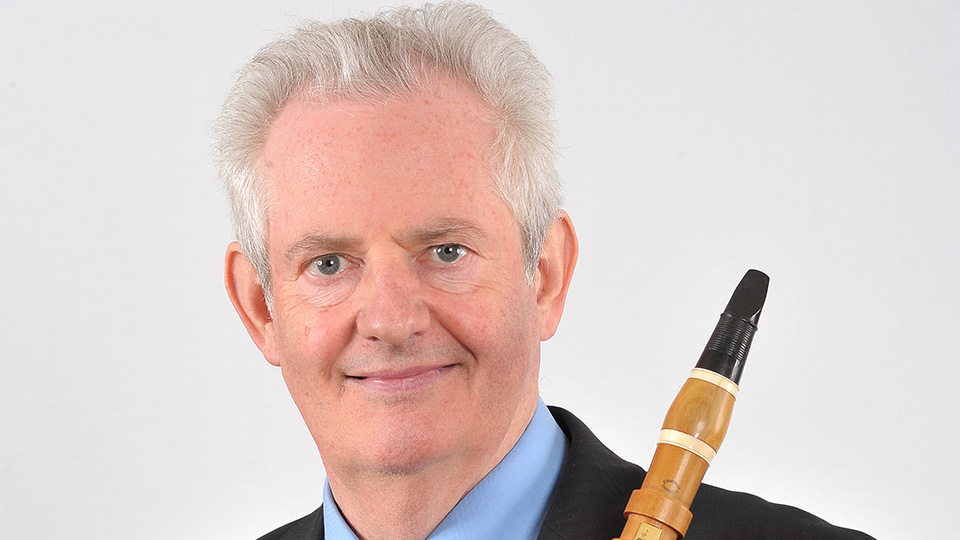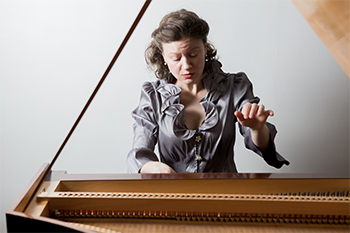by Jarrett Hoffman

“I was rather put off because some of the musical results were not that fantastic,” Lawson said by telephone from the Royal College of Music in London, where he directs the school, chairs its historical performance program, and teaches classical clarinet. “I was very interested in the academic side of early music, but it took me a bit of time to get ‘round to playing it.”
Audiences are certainly happy that he did get around to it. His credentials as a player include performances with Britain’s leading period orchestras, solo appearances in Wigmore and Carnegie Halls, and recordings of an array of concertos and chamber music.
Lawson’s latest project falls in the category of things that are always exciting and often challenging: meeting new musicians — some from another continent, no less — and playing chamber music with them. Next weekend, under the umbrella of Les Délices, he will join oboist Debra Nagy, bassoonist Wouter Verschuren, hornist Todd Williams, and fortepianist Sylvia Berry in three concerts of music by Mozart and Beethoven.
“It’s an adventure for me to come and play,” Lawson said. “I know Wouter because he’s on my staff at the Royal College of Music, but the other players I have not yet met, and that’s going to be very interesting. One of the important things is going to be, can we get the music off the page? What we’ve been left by composers are indications of how the music should go, but what are we going to do on top of that? And can it be spontaneous? I think all of that is terribly important.”
The heart of the program is two quintets in E-flat — Mozart’s K. 452 and Beethoven’s Op. 16. The overlap in key is no coincidence. As Nagy writes in her program notes, Beethoven was clearly influenced by Mozart here, from the unusual instrumentation and key to formal structures. (Nagy also investigates the fascinating question of how all that happened, since the Mozart work wasn’t published in its original instrumentation until four years after Beethoven’s.) In between those two quintets will come Beethoven’s Seven variations on “God Save the King,” WoO 78, for solo piano.
In an interview with Les Délices, Lawson said that Mozart regarded his quintet as his finest work to date. “He achieved a wonderful conversation piece for the five instruments…The quality of invention is of course always at a very high level.” The clarinetist noted the work’s influence on Beethoven’s quintet, “a less mature but highly engaging work.”
Getting back to Lawson’s own story, it was his academic research into early music — including a master’s thesis on the 18th-century clarinet and a doctoral thesis on the chalumeau — that led him into historical performance.
“I gradually thought, well, I’d like to be playing some of this stuff,” he told me. “I began to realize that for me, the music sounded more inevitable on the original instruments. And I suppose my position now is that you can do all sorts of things on period instruments that you can’t do on the modern ones.”
Lawson loves how many colors exist across the chromatic scale on early clarinets, thanks to their more complicated fingerings. The modern clarinet, with its mechanical innovations, smooths that out. “When Mozart writes a chromatic scale, say in the first movement of the ‘Kegelstatt’ Trio, it’s really quite an event, whereas on the modern clarinet, it’s pretty routine.”
Blend is another factor. “Period clarinets go very well with string quartets using gut strings,” he said, citing Brahms’ Clarinet Quintet. “It never sounds like a concerto — there’s a real integration.” And he noted that using period instruments for pieces like the Mozart and Beethoven quintets makes the inner voices come through more clearly thanks to the translucent texture.
While Lawson feels strongly about early instruments, he’s also very self-aware about his work. “If you’re in my position, you have to believe all of that because it takes an enormous amount of effort to play these different period instruments,” he said, laughing. “You have to fundamentally think that it’s worth it at the end of it all.”
He also pointed out the big question mark about historical playing: “One of the delicious things about it is that really one has no idea what music sounded like before the age of recording — and in a sense, that’s what keeps people like me in business,” he said. “A lot of well-known music directors have read all the same treatises but have come up with wildly different results.”
To Lawson, the artistic side of playing must come from the individual. “You can’t be totally historical because you’re the player, not Stadler,” he said, referencing that favorite collaborator of Mozart’s. “And music without personality is nothing.”
Performances take place on November 1 at 7:30 pm at Holy Trinity Lutheran in Akron, November 2 at 7:30 pm at Lakewood Congregational, and November 3 at 4:00 pm at Plymouth Church in Shaker Heights. Tickets are available here.
A free open rehearsal — part of the LD@Work series — takes place on October 30 from 6:30 to 9:30 pm at Plymouth Church.
Published on ClevelandClassical.com October 23, 2019.
Click here for a printable copy of this article




